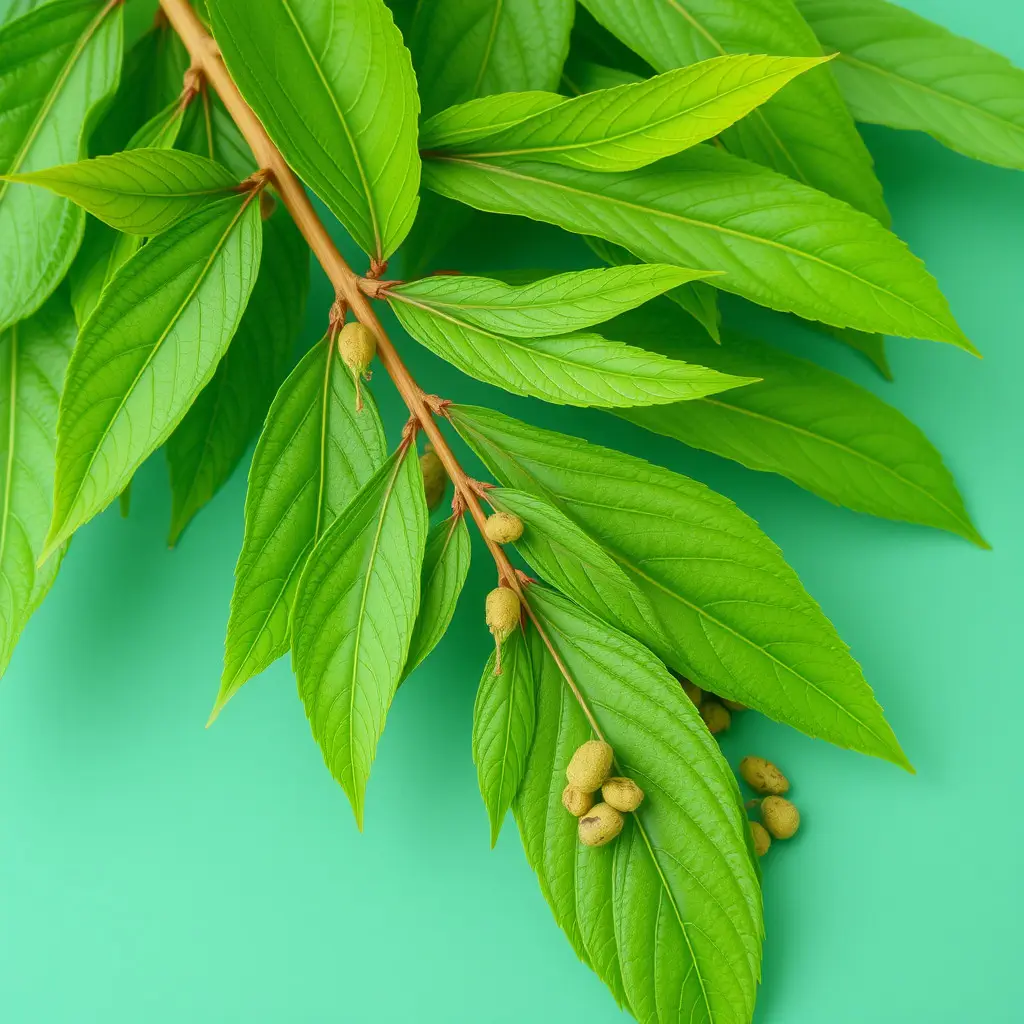Kratom, derived from Southeast Asian plants, has shown potential as an alternative for chronic pain management due to its anti-inflammatory effects. Its alkaloids, mitragynine and 7-hydroxymitragynine, may engage with opioid receptors to reduce pain without the typical side effects or dependence of conventional treatments. Emerging research suggests kratom could inhibit inflammatory cytokines and enzymes, making it a subject of interest for managing chronic inflammatory conditions. However, its use should be cautious and guided by healthcare professionals due to the need for accurate dosage and individual variation in alkaloid composition among different kratom strains. The integration of kratom into pain management strategies is most effective when combined with a holistic approach that includes physical therapy, acupuncture, dietary changes, exercise, and stress management for a balanced sense of well-being. Ongoing research is crucial to confirm its safety and efficacy in the context of chronic pain management.
Kratom, a botanical derivative from the Mitragyna speciosa tree, has garnered attention for its potential in chronic pain management. Its anti-inflammatory properties make it a subject of intrigue for those seeking natural alternatives to traditional pain relief. This article delves into how kratom can play a pivotal role in reducing inflammation, offering insights into its mechanisms, optimal strains, and effective dosages. We will explore the science supporting its use and provide guidance on integrating it into a holistic approach for inflammation and pain relief, highlighting the benefits of this approach in managing chronic pain effectively.
- Understanding Kratom's Role in Chronic Pain Management: An Overview of Its Anti-Inflammatory Properties
- Exploring the Science Behind Kratom and Inflammation Reduction: Mechanisms, Strains, and Dosages
- Integrating Kratom into a Holistic Approach for Effective Inflammation and Pain Relief
Understanding Kratom's Role in Chronic Pain Management: An Overview of Its Anti-Inflammatory Properties

Kratom, a tropical evergreen tree native to Southeast Asia, has garnered attention in the realm of natural pain management due to its potential anti-inflammatory properties. The leaves of kratom contain alkaloids such as mitragynine and 7-hydroxymitragynine, which are thought to interact with the body’s opioid receptors, providing pain relief. Chronic pain management with kratom is an area of increasing interest for those seeking alternatives to traditional pharmaceuticals. The anti-inflammatory effects of kratom may contribute to its efficacy in managing chronic pain conditions by reducing inflammation at the source, potentially offering relief from persistent discomfort.
Research into the mechanisms behind kratom’s analgesic and anti-inflammatory properties continues to evolve. Studies suggest that kratom may inhibit pro-inflammatory cytokines and enzymes involved in the inflammatory response, which could explain its observed benefits in reducing pain and swelling associated with chronic conditions. However, it is crucial for individuals considering kratom as part of their pain management strategy to consult healthcare professionals, given the complex interplay of factors influencing individual responses to kratom and the need for medical oversight when altering treatment regimens. Understanding kratom’s role in chronic pain management requires a careful examination of both its potential benefits and the necessity for further research to fully elucidate its safety and efficacy.
Exploring the Science Behind Kratom and Inflammation Reduction: Mechanisms, Strains, and Dosages

Studies have begun to shed light on the potential anti-inflammatory properties of kratom, a plant whose leaves come from the Mitragyna speciosa tree native to Southeast Asia. The science behind this natural remedy’s effects on inflammation is multifaceted, involving various alkaloids that interact with the body’s opioid receptors and other systems. These interactions may modulate immune responses, leading to a reduction in inflammatory markers. For instance, alkaloids such as mitragynine and 7-hydroxymitragynine have been found to exhibit anti-inflammatory effects that could be beneficial for managing chronic pain.
In the context of chronic pain management with kratom, understanding the right strains and dosages is crucial for safe and effective use. Different kratom strains, such as Maeng Da, Bali, or Thai, can vary in their alkaloid profiles and thus their effects on inflammation and pain perception. Users often experiment with different strains to find the one that provides the most relief while minimizing side effects. Dosage is another key factor; it must be carefully considered as it can influence the intensity and duration of anti-inflammatory action. It’s important for individuals to consult healthcare professionals when integrating kratom into their pain management regimen, as dosages that are too high or not appropriate for a person’s unique physiology can lead to adverse effects.
Integrating Kratom into a Holistic Approach for Effective Inflammation and Pain Relief

Kratom, a plant from Southeast Asia, has garnered attention in holistic health circles for its potential role in chronic pain management. Its active alkaloids, mitragynine and 7-hydroxymitragynine, are believed to interact with the body’s opioid receptors, providing analgesic effects that can be beneficial for those suffering from inflammation-related pain. Integrating kratom into a holistic approach offers a natural alternative to traditional pharmaceuticals, which often come with a host of side effects. By doing so, individuals may experience relief from chronic pain without the risk of dependence or opioid-induced hyperalgesia that is sometimes encountered with prescription painkillers.
Incorporating kratom into an overarching wellness strategy can be complementary to other therapeutic modalities such as physical therapy, acupuncture, and dietary changes that also focus on reducing inflammation. It’s important for those considering this approach to consult with healthcare professionals to ensure safe and effective use. This integrative method aims to address the root causes of inflammation and pain, rather than merely masking symptoms. By combining kratom with lifestyle modifications like regular exercise, a balanced diet rich in anti-inflammatory compounds, and stress management techniques, individuals may find a more comprehensive solution for managing chronic pain and reducing inflammation. This holistic method not only targets the physical aspects of discomfort but also considers the psychological and emotional well-being of the individual, promoting an overall sense of health and vitality.
In conclusion, the potential of kratom as a supplement in chronic pain management, particularly through its anti-inflammatory properties, presents an intriguing avenue for those seeking alternative solutions. The scientific evidence supporting its role in reducing inflammation is promising and warrants further investigation. As detailed in this article, understanding the nuances of kratom’s effects, including the appropriate strains and dosages, is crucial for safe and effective integration into a holistic pain management regimen. While not a panacea, kratom may offer significant benefits for individuals dealing with persistent inflammation-related discomfort. It is imperative for patients to consult healthcare professionals before incorporating kratom into their wellness plans, ensuring proper guidance and monitoring of its use alongside conventional treatments.






